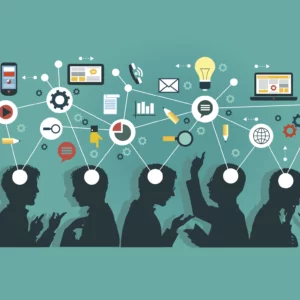
Digital Marketing A/B Testing: Unveiling the Science Behind Success
I. Introduction
In the dynamic realm of digital marketing, staying ahead requires strategic insights and continuous improvement. A/B testing emerges as a powerhouse, unraveling the science behind what works and what doesn’t. Let’s delve into the intricacies of Digital Marketing A/B Testing and how it can transform your campaigns.
II. Setting Up A/B Tests
A. Definition of A/B Testing A/B testing, also known as split testing, is a method where two versions (A and B) of a web page or marketing element are compared to determine which performs better. It’s a crucial aspect of refining digital strategies.
B. Importance of A/B Testing in Digital Marketing The landscape of digital marketing is ever-evolving, and A/B testing provides a structured approach to understand user behavior, optimize conversion rates, and enhance overall performance.
III. Conducting A/B Tests
A. Identifying Goals and Metrics Before embarking on A/B testing, clearly define your goals and the metrics that matter most to your campaign. Whether it’s click-through rates, conversion rates, or user engagement, a precise focus is key.
B. Selecting Variables to Test Choose the variables that can have a significant impact on your goals. This could range from headlines and call-to-action buttons to color schemes or even the layout of a webpage.
C. Choosing the Right Tools Numerous tools are available for A/B testing, each with its unique features. Select tools that align with your testing goals and provide reliable data.
IV. Analyzing A/B Test Results
A. Statistical Significance Understanding statistical significance is crucial to draw accurate conclusions from your A/B tests. It ensures that the observed differences are not due to chance.
B. Interpreting Data The data obtained from A/B tests isn’t just numbers; it tells a story. Dive deep into the analytics, considering user behavior, demographics, and other relevant factors.
C. Adjusting Strategies Based on Results A/B testing is not a one-time effort. Use the insights gained to tweak and refine your strategies continuously. Adaptation is key to long-term success.
V. A/B Testing Best Practices
A. Testing One Variable at a Time To pinpoint what drives success or failure, focus on testing one variable at a time. This ensures clarity in understanding the impact of changes.
B. Testing with a Large Enough Sample Size Small sample sizes can lead to unreliable results. Ensure your tests include a significant number of participants to derive meaningful conclusions.
C. Continuous Testing and Iteration Digital landscapes evolve, and so should your strategies. Implement a culture of continuous testing and iteration to keep pace with changing trends.
VI. Challenges in A/B Testing
A. Overcoming Bias Human biases can inadvertently influence A/B test results. Be aware of these biases and take measures to minimize their impact.
B. Dealing with External Factors External factors such as seasonality or external events can skew results. Account for these factors when interpreting test outcomes.
C. Handling Inconclusive Results Not all A/B tests yield clear winners. Learn to navigate inconclusive results and use them as opportunities for further exploration.
VII. Real-world Examples of Successful A/B Tests
A. Conversion Rate Optimization By tweaking the wording of a call-to-action button, Company X increased its conversion rate by 20%, showcasing the power of subtle changes.
B. Email Marketing Testing different subject lines and send times resulted in a 15% boost in open rates for Company Y’s email campaigns.
C. Website Design A/B testing variations of a homepage layout led to a 25% increase in user engagement for Company Z.
VIII. The Future of A/B Testing in Digital Marketing
A. Emerging Technologies Advancements in technologies like virtual reality and augmented reality are likely to influence how A/B testing is conducted in the future.
B. Integration with AI and Machine Learning The integration of AI and machine learning will enable more sophisticated and automated A/B testing, providing deeper insights and quicker decision-making.
C. Evolving Strategies As consumer behaviors and preferences change, A/B testing strategies will evolve, necessitating marketers to stay agile and innovative.
IX. Conclusion
In the ever-evolving landscape of digital marketing, A/B testing stands as a beacon for marketers seeking data-driven insights. By understanding its intricacies and implementing best practices, businesses can unlock the potential for transformative success.

